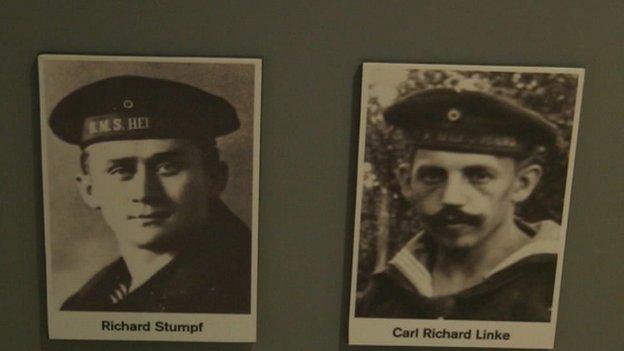WW1: When Germany bombarded Hartlepool
- Published
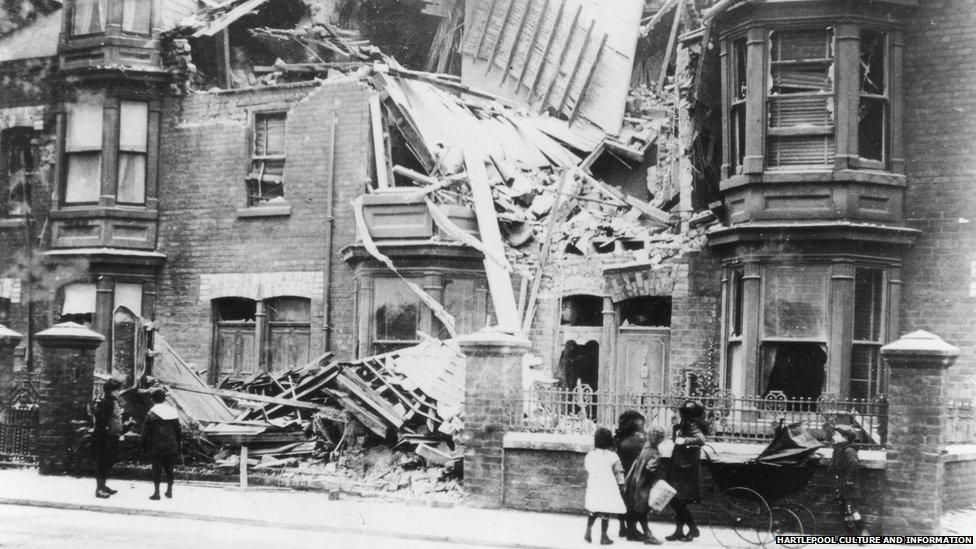
On 16 December, 1914, the German Navy bombarded the town of Hartlepool, in north-east England, killing 130 people and injuring hundreds more. Dozens of buildings were destroyed or damaged and many of those hit are still scarred by pieces of shrapnel embedded in the walls.
During a frantic 40 minutes, more than 1,100 shells rained down on the shipbuilding town.
On the same day, German warships also attacked Scarborough and Whitby, in North Yorkshire, bringing civilians unexpectedly on to the front line of battle, but Hartlepool was by far the worst hit.
Many children were having breakfast or heading for school when the attack began.
Fathers who had already started their shifts dashed home to collect their families and a handful of belongings before fleeing on foot out into the County Durham countryside.

This composite picture merges photographs of Moor Terrace after the bombardment and the same street 100 years later
The Headland area, which was home to the Heugh Battery guns, suffered some of the worst damage with the streets of Moor Terrace (above), Victoria Place and Cliff Terrace being particularly badly hit.
Having the guns at its eastern end meant Moor Terrace was in the firing line of the German shells.
Most houses suffered some form of damage, some more severe than others.
Speaking to an archive project in the 1980s, survivor Edith Reed said: "A terrible noise started, the windows rattled, you thought the world was coming to an end."
Another survivor, Mary Morris, said: "There was a boy, he was only 14, he was going to the shop, he was blown to pieces."
Although most of the shells fell on the Headland, several streets in the west of the town were also hit.
The Grosvenor Street tailor shop of C. Mustard (below) was one high-profile casualty, being struck by a 6 in shell.
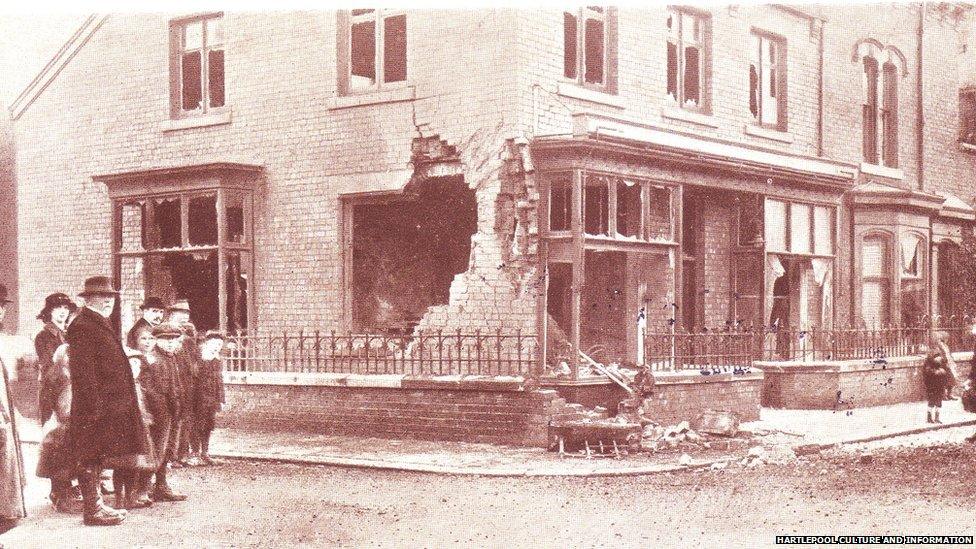

The building (above) is now a family home and still looks similar to how it did 100 years ago.
No. 7 Victoria Place (below) was the home of Salvation Army adjutant William G Avery, who was among the first civilians to be killed when the house was hit by a shell.
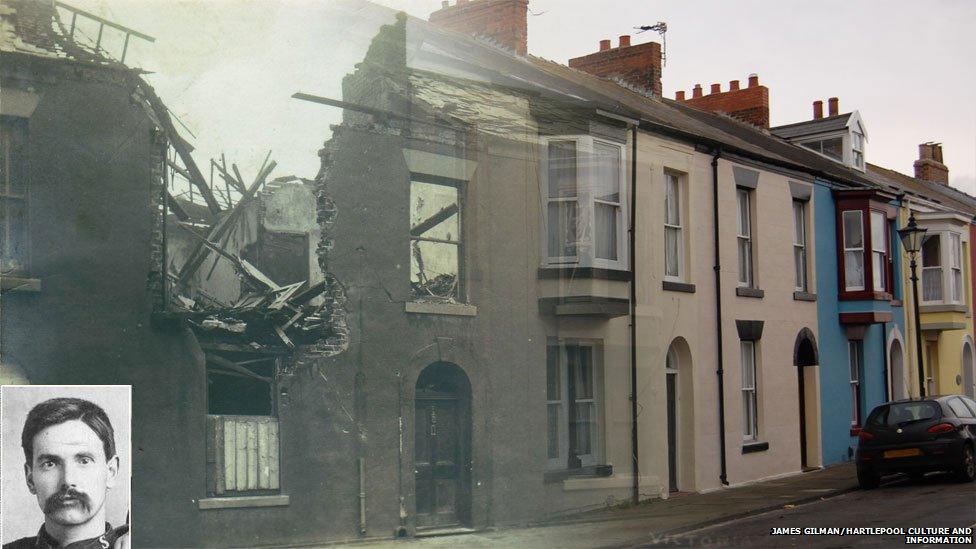
A further 113 civilians were killed along with nine soldiers at the Heugh Battery and seven sailors.
But among the death and destruction, other survivors recalled witnessing great bravery and defiance.
One man, who was a child at the time, said: "I always remember seeing an old chap in a navy blue suit with a bowler hat on and he was carrying a frying pan and I'm sure inside was bacon and sausage.
"I thought well he's not going to let anybody have that [meal] after he's cooked his breakfast."

The Headland area looks remarkably unchanged and many of the same terraces still remain.
Greencliffe, a large home towards the east end of Moor Terrace, suffered extensive damage, but today the building - which is now apartments - has hardly altered.
Even the iron railings outside look unchanged.
A close look will reveal glimpses of the devastating attack 100 years ago - many houses still have pieces of shrapnel embedded in their walls.
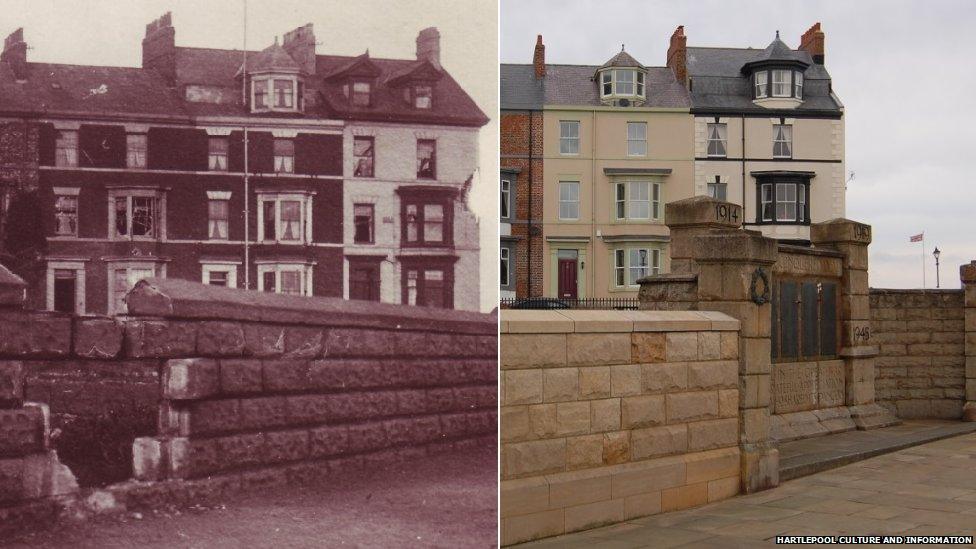
No 19, Cliff Terrace, pictured above with a chunk of masonry missing from its wall, was demolished and has never been replaced.
Sisters Annie and Florence Kay were killed when a shell struck the house, their family home.
The main other notable change in the above scene is the addition of a memorial dedicated to both world wars and the bombardment.
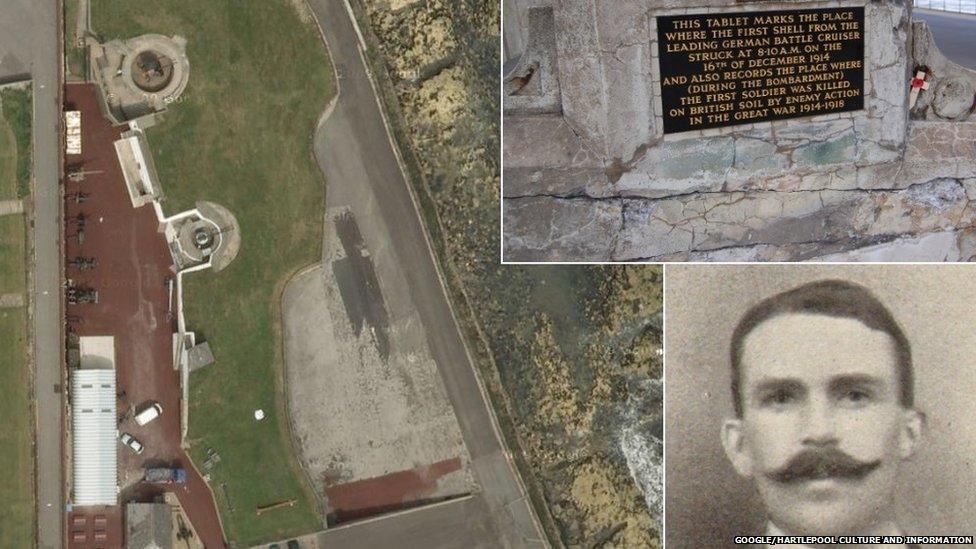
There is also a memorial tablet at the south-eastern edge of the nearby Heugh Battery (above) which marks the first place to be hit by a shell.
Private Theo Jones (above right), a 27-year-old former headteacher from Leicestershire, was the first person to be killed in the bombardment and also becoming the first soldier to die on English soil during the war.
Now the battery is a military museum.
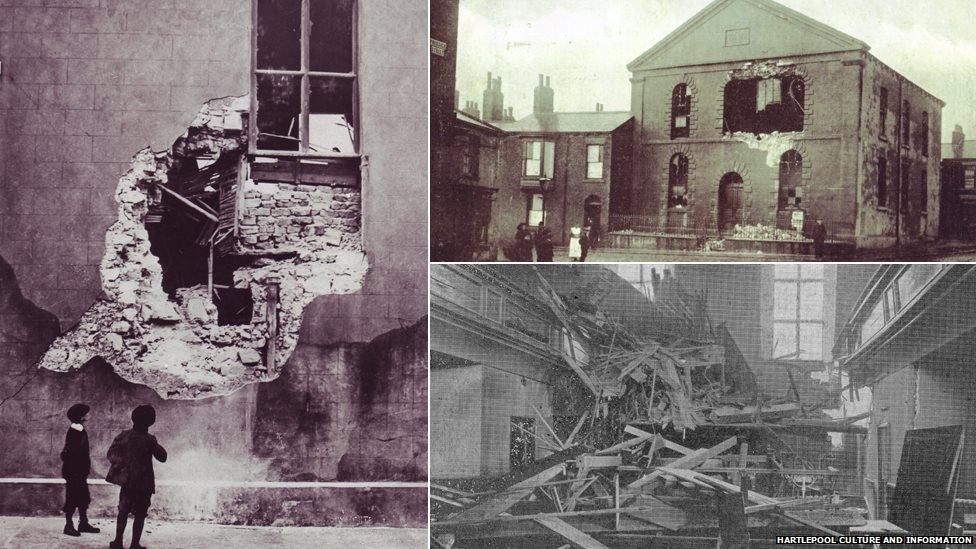
The images of Hartlepool Headland's Baptist Church, with gaping holes blasted through it, became iconic symbols of the bombardment.
The chapel is still on the same site today, albeit it is now a smaller building.
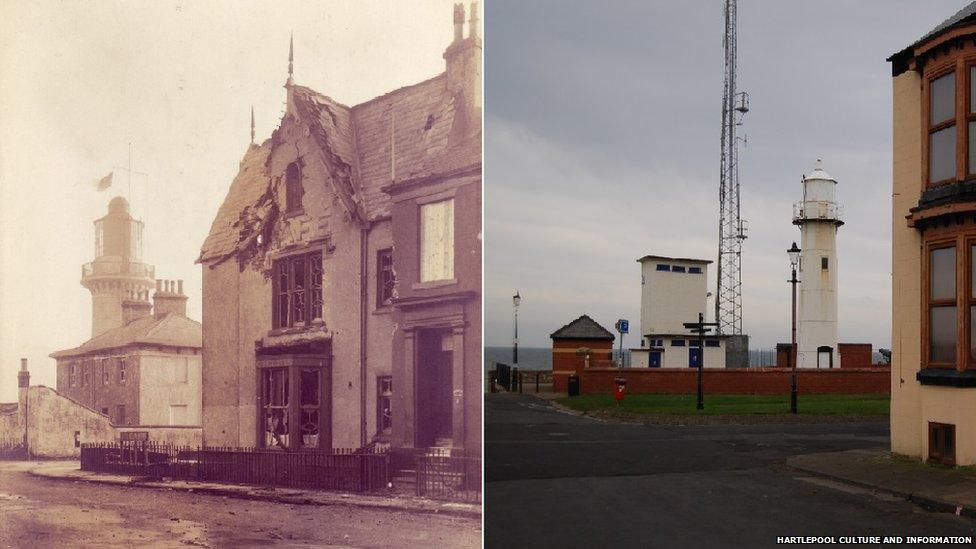
The Lighthouse Cafe, close to the Heugh Battery, was badly damaged and the building was torn down.
Its place in the history of the bombardment has been preserved in the below painting by James Clark.
The 1915 picture depicts the three German warships, the SMS Blucher, Seydlitz and Moltke, out at sea, as well as the first two soldiers being shot and killed.

Fear of a repeat attack remained for days afterwards with many families moving further inland, said Mark Simmons, museums manager for Hartlepool Borough Council.
But the attack also galvanised the townsfolk with 22,000 men joining up, a huge proportion of the population, and many more men and women working in the shipyards and munitions factories.
Mr Simmons said: "The other big impact is that Hartlepool, on three occasions, wins awards for raising the most money per head of population of any place in the British Empire for the war effort.
"It's an amazing total in modern money of £545m."
Speaking in the 1980s, survivor Myra Docherty said: "The world should know how Hartlepool coped, we're tough you know and what happened that day, we all got back on our feet in no time - good people, tough folk."
- Published16 December 2014

- Published16 December 2014
